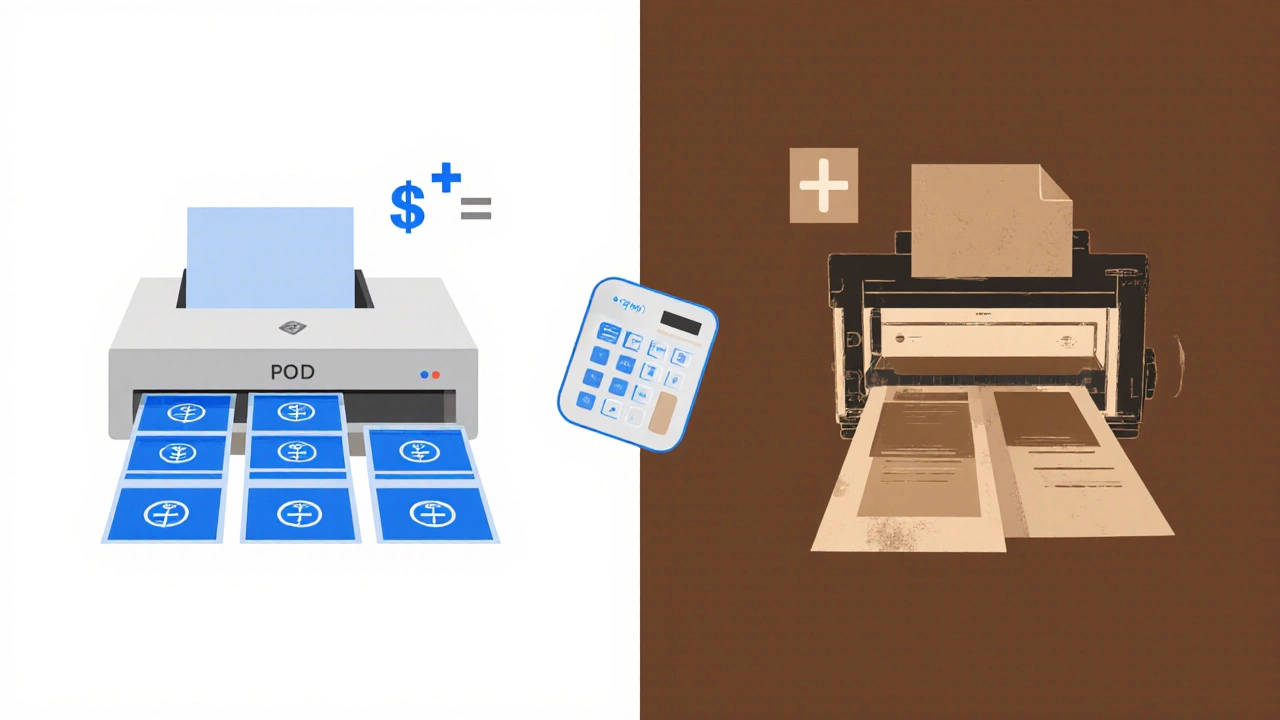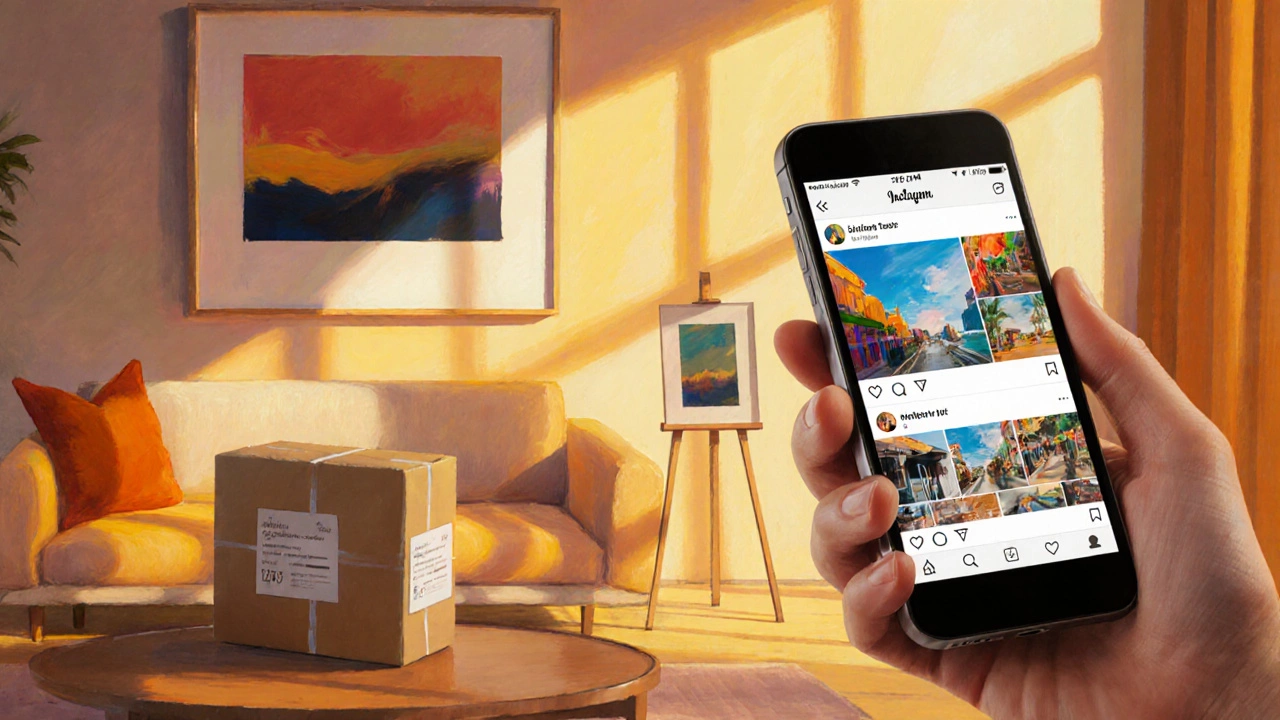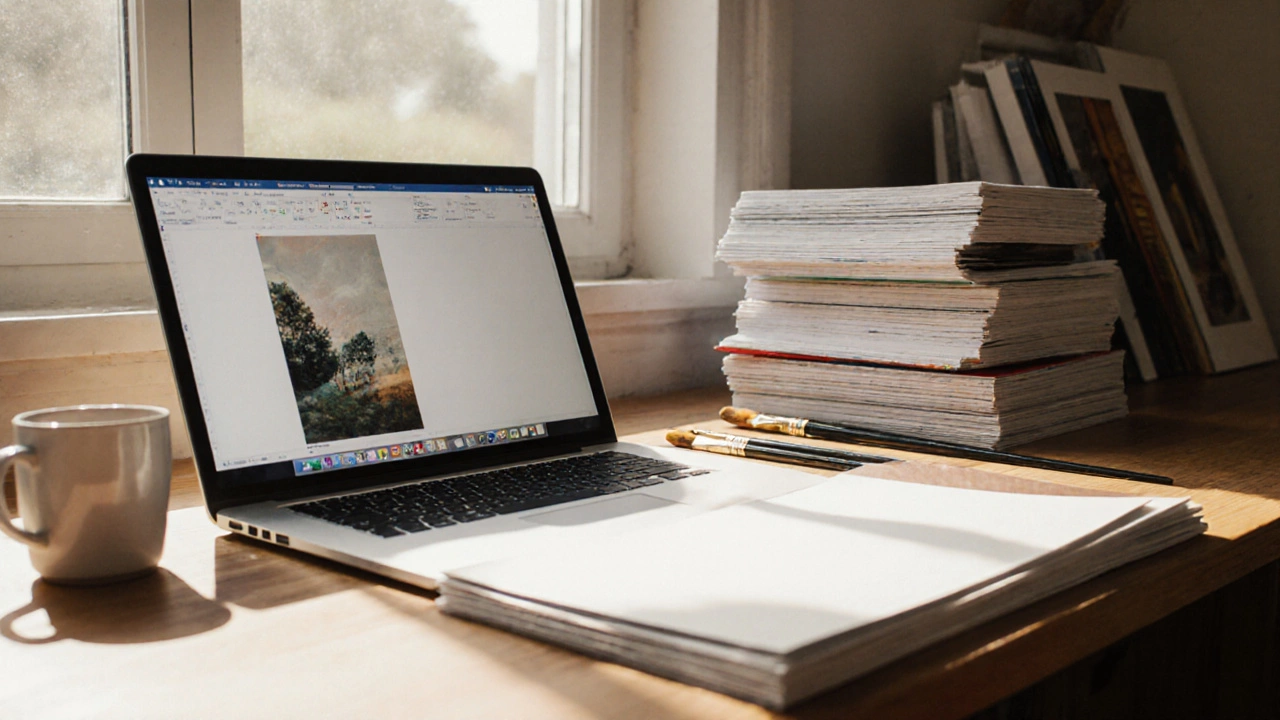Art Print Pricing Calculator
Calculate Your Print Price
Pricing Results
Pricing Breakdown
Based on the cost-plus formula: (Production Cost + Shipping) × 2.5 + Artist Markup
Base Price Calculation
($ + $) × 2.5 = $
Final Price
Base Price + % = $
Market Comparison
Typical market prices for similar prints: $45-$75
Your price of $ is in the market.
How to Use This Calculator
Pricing Strategy Guide
Use this calculator to implement the cost-plus pricing formula discussed in the article:
- Enter your actual production costs and shipping
- Use the default 20% artist markup or adjust based on your business needs
- See how your price compares to the market
- Consider whether giclée printing is worth the investment
When you hear the phrase Art prints is a reproduction of an original artwork, usually printed on paper or canvas, that can be sold at a lower price than the original piece, you might wonder if it’s a real money‑maker or just a hobby.
The short answer? Yes, you can turn selling art prints into a steady side income or even a full‑time business - but only if you treat it like a business from day one. Below you’ll find the exact steps, tools and pricing tricks that helped dozens of creators move from a single garage sale to a global online shop.
Key Takeaways
- Print‑on‑demand (POD) services let you launch with zero inventory.
- High‑quality giclée prints command 2-4× the price of cheap inkjet copies.
- Choose the right platform - Etsy, FineArtAmerica, or a self‑hosted Shopify store - based on audience and fees.
- Price using a simple cost‑plus formula and adjust for perceived value.
- Promote on Instagram, Pinterest and niche forums to drive traffic without huge ad spend.
Understanding the Art Print Market in 2025
The global market for fine‑art prints is projected to hit US$12billion this year, driven by collectors who want museum‑quality work without the price tag. Two buyer groups dominate:
- Home decorators - looking for affordable wall art that matches trends.
- Art enthusiasts - willing to pay a premium for limited editions and archival quality.
Knowing which segment you serve shapes every decision, from paper type to pricing strategy.
Choosing a Production Method
Most artists start with a Print‑on‑Demand service. POD providers store your digital file, print each order, and ship directly to the customer. This eliminates upfront costs, but you sacrifice some control over paper stock and color accuracy.
If you want the highest fidelity, consider investing in a small giclée printing setup. Giclée uses archival inks on heavyweight cotton‑based paper, delivering museum‑grade results that can be priced at a premium.
Typical cost comparison (2025 US dollars):
- POD inkjet on standard matte paper: $5-$8 per print.
- Giclée on archival paper: $12-$20 per print (including professional finishing).
Run a quick test batch with both methods. If the giclée prints sell at least 2.5× the POD price, the extra effort is worth it.
Setting Prices That Actually Work
Pricing art prints is part art, part math. A reliable formula many creators use is:
Retail price = (Cost of production + Shipping) × 2.5+Optional artist markup
Example: A giclée print costs $14 to produce, shipping averages $4, and you add a 20% artist markup.
- Base = $14 + $4 = $18
- Multiplier = $18 × 2.5 = $45
- Artist markup = $45 × 0.20 = $9
- Final retail price = $54
Adjust the multiplier higher for limited editions or lower for bulk sales. Keep an eye on competitors - if most similar prints sit around $60, pricing at $54 gives you an edge while still covering costs.

Choosing Where to Sell: Platform Comparison
| Platform | Setup Cost | Transaction Fees | Audience Fit | Best For |
|---|---|---|---|---|
| Etsy | $0 (listing fee $0.20 per item) | 5% + $0.25 per sale | Handmade‑craft shoppers, global reach | Artists starting out, low‑volume sellers |
| Fine Art America | Free (premium $30/mo optional) | 15% of sale price | Art collectors, interior designers | High‑volume POD, print‑on‑demand fulfillment |
| Shopify | $29/mo (Basic plan) | 2.9% + $0.30 per transaction + App fees | Brand‑focused sellers, repeat customers | Full‑control stores, scaling to wholesale |
Pick one to start, but don’t lock yourself in. Many successful creators list on Etsy for discovery while running a Shopify boutique for repeat buyers.
Marketing Your Prints Without Breaking the Bank
Organic traffic is the lifeblood of low‑budget art businesses. Here are three proven channels:
- Instagram marketing - Post lifestyle shots of your prints in real rooms, use relevant hashtags (#artprint, #wallart), and run occasional story polls to gauge price tolerance.
- Pinterest - Create Pin boards titled "Modern Home Office Art" or "Boho Wall Décor" and link each pin directly to your product page.
- Join niche forums (e.g., r/ArtPrints on Reddit) and share behind‑the‑scenes stories; subtle self‑promotion works better than hard‑sell ads.
Don’t forget email capture. Offer a free “Print‑Sizing Guide” PDF in exchange for an address, then send quarterly updates with new releases and limited‑time discounts.
Legal and Logistical Essentials
Protecting your work starts with clear Copyright. Register your images with your country’s copyright office (in the US, use the Copyright Office’s online portal). This adds a legal shield if someone copies your design.
For taxes, treat each sale as self‑employment income. Keep detailed records of production costs, platform fees, and shipping expenses - they’re deductible.
Shipping logistics vary by region. In NewZealand, the national postal service offers flat‑rate parcels that work well for prints up to 30cm. If you ship internationally, partner with a fulfillment service that provides customs documentation to avoid delays.

Scaling Up: Wholesale, Limited Editions, and Beyond
Once you’re consistently moving 20-30 prints a week, consider these growth moves:
- Wholesale to boutiques - Offer a 40% discount for bulk orders of 10+ pieces. Provide a short catalogue and let the shop handle retail markup.
- Limited‑edition runs - Number each print (e.g., 1/50) and price 1.5-2× higher. Collectors love scarcity.
- Expand product line - Turn the same artwork into postcards, calendar pages, or canvas wraps using the same file.
Platforms like Printful and Redbubble make it easy to add these variants without extra inventory.
Common Pitfalls and How to Avoid Them
Even seasoned sellers stumble. Keep an eye on these traps:
- Underpricing - If you price below cost, you’ll burn through your budget fast. Always run the cost‑plus formula first.
- Poor image quality - Low‑resolution files print fuzzy. Export at 300 dpi minimum and use an ICC color profile.
- Ignoring customer service - Slow replies or vague tracking info lead to negative reviews that deter future buyers.
Next‑Step Checklist
- Create high‑resolution (300dpi) master files in Digital file formats (TIFF or PNG).
- Choose a production method - POD for testing, giclée for premium.
- Open a shop on the platform that matches your audience (Etsy, FineArtAmerica, or Shopify).
- Set prices using the cost‑plus formula and add a 20% artist markup.
- Launch Instagram and Pinterest accounts, post three times a week, and add a link in bio.
- Register your designs for copyright protection.
- Track sales, fees, and shipping costs in a simple spreadsheet for the first three months.
If you tick all these boxes, you’ll have a functional, profit‑generating art‑print business in less than six months.
Frequently Asked Questions
How much should I charge for a 12×18inch print?
First calculate production cost (e.g., $12 for giclée plus $4 shipping). Multiply by 2.5 = $40, then add a 20% markup = $48. Round to $49 for a clean price.
Is print‑on‑demand profitable for a new artist?
Yes, if you keep margins healthy. Start with low‑cost POD for testing designs; once a print sells consistently, switch to higher‑margin giclée or offer limited editions.
Do I need a business license to sell art prints online?
Most jurisdictions require a simple sales tax permit rather than a full business license for hobby‑level sales. Check your local government website for exact requirements.
What’s the best way to protect my designs?
Register the artwork with your national copyright office, add a watermark to online preview images, and include a clear terms‑of‑use clause on your shop page.
Should I offer free shipping?
Free shipping works well if you can fold the cost into your price without eroding margin. For higher‑priced prints it’s a strong incentive; for cheap prints, consider flat‑rate shipping instead.





